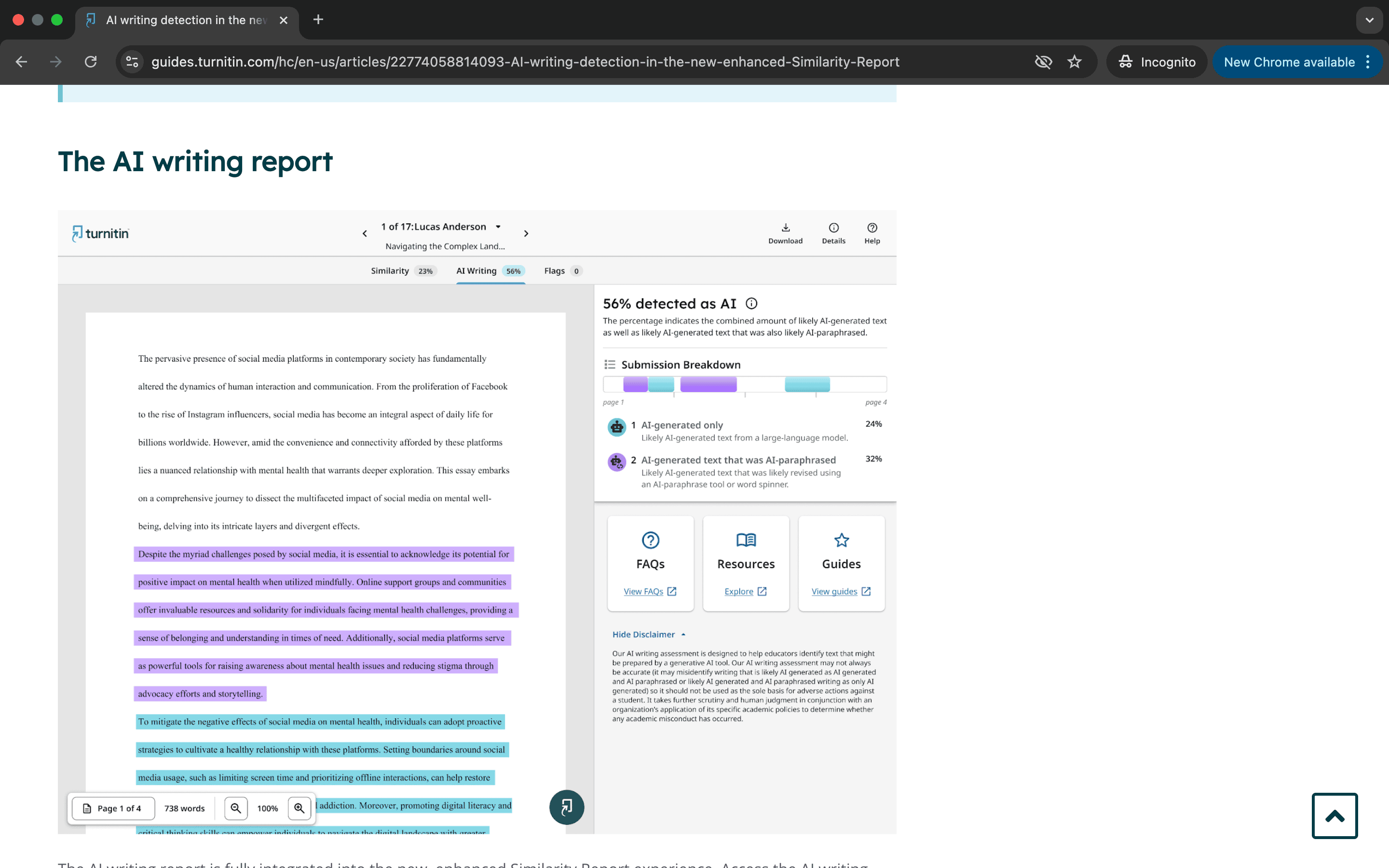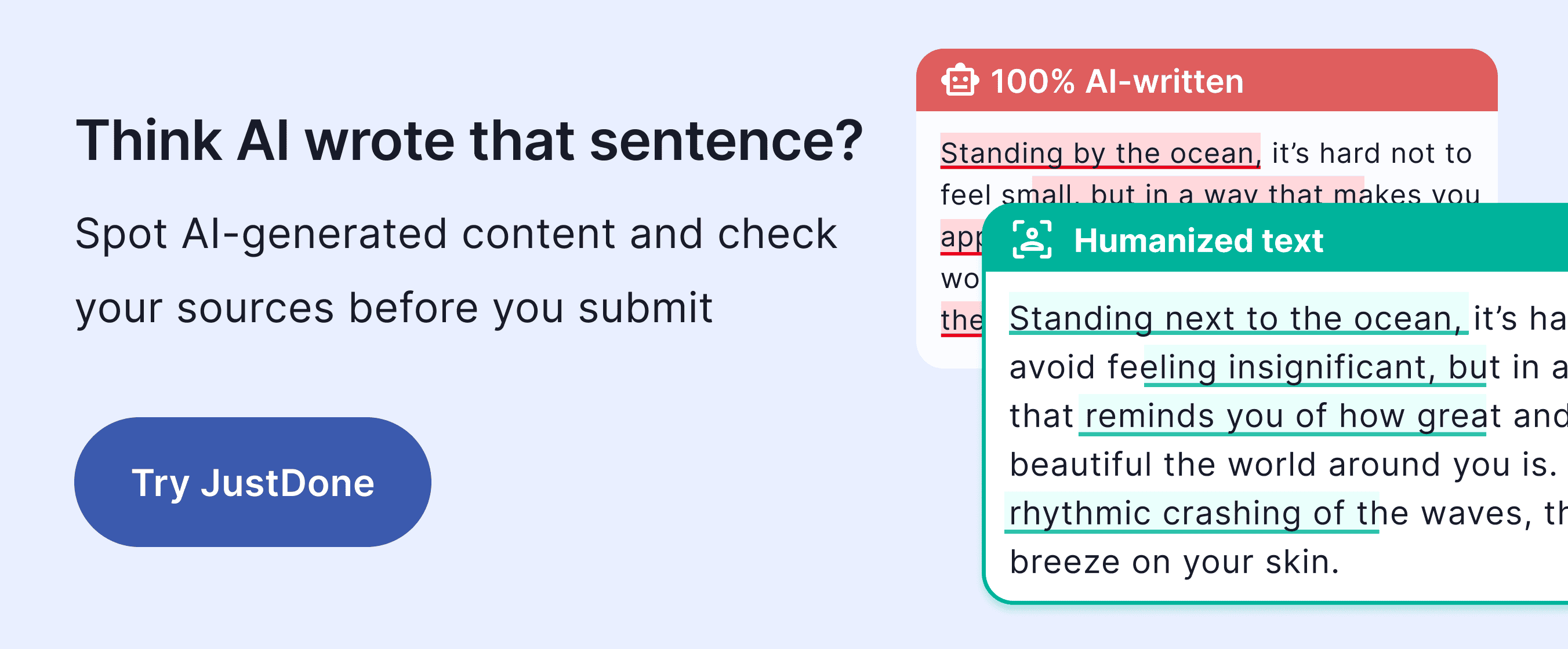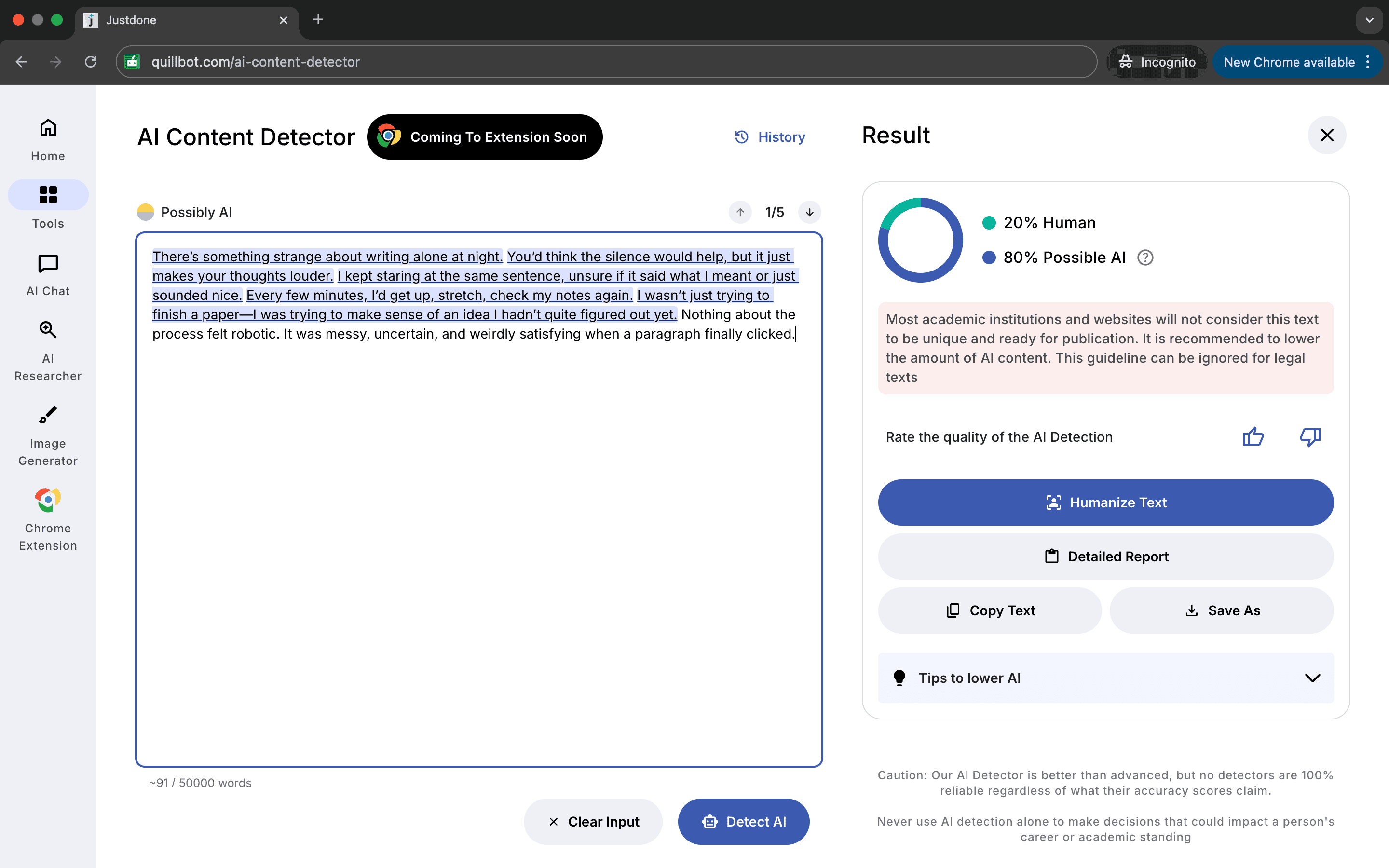If you’re a student or learner close to academia in 2025, you’ve definitely used such tools as Turnitin and QuillBot. Maybe you’ve faced a lot of challenges connected with them. One tool (Turnitin) checks your work for originality. The other (QuillBot) helps you rewrite text to avoid plagiarism or sound more academic. I’ve worked with both, and more importantly, I’ve seen how students use or misuse them. So I wanted to take a moment to break down how they really work, what they’re good for, and where they fall short. Especially now that AI writing tools are part of everyday academic life, understanding tools like these isn’t just helpful, it’s essential.
What Are the Benefits of Using Turnitin vs. QuillBot
Turnitin is still the standard in higher education for plagiarism detection. Most universities I’ve worked with rely on it because it’s comprehensive and institutional-level. It doesn’t just check your work against websites like a regular free plagiarism checker would; it scans against a huge archive of past student submissions, academic papers, and proprietary databases. That means even if someone submitted a paper two years ago at a different university, and you happen to match it, Turnitin can still flag it. Here is a comparative table of what Turnitin and QuillBot can bring to the table for students.
Turnitin vs QuillBot: Student Use in 2025
| Feature/Purpose | Turnitin | QuillBot |
| Primary Function | Academic plagiarism detection; checks originality against vast databases | Paraphrasing and rewriting tool to improve text or avoid direct plagiarism |
| Databases Used | Institutional archives, past student submissions, journals, publications | Public internet sources and limited ProQuest integration |
| Plagiarism Detection Strength | Gold standard in academia; unmatched coverage for student papers | Moderate; may miss paraphrased overlaps that public databases do not have |
| AI Detection | Built-in AI checker since 2023; flags only generic, structured writing | Has an AI detector feature from 2024; has nuances, prone to misses |
| Risks | Can over-flag polished or too formal student writing as AI | Paraphrased text may still be flagged by Turnitin because of semantic similarity |
| Learning Value | Teaches citation and originality though detailed similarity reports | Helps learners practice rephrasing but risky if overused |
| Best Use Case | Academic essays, theses, or assignments in university settings | Draft improvement, rewroding ideas, or polishing before submission |
For instructors, limited level of access to Turnitin is incredibly helpful for spotting self-plagiarism and recycled assignments.
One underrated benefit of Turnitin is that it also teaches students what good citation looks like. Many instructors use the results to open up conversations, not accusations. I’ve seen students who were genuinely unaware they did something wrong, and the Turnitin report helped them catch it before it turned into something bigger. So even if it feels intimidating, it’s more of a protective tool than a punishment if you learn to use it early. Here's what Turnitin's similarity report looks like:

Another point to consider is that Turnitin now includes AI detection capabilities. It tries to flag sections of your paper that may have been generated by tools like ChatGPT. In some cases, this detection works well, especially when the writing is overly generic or perfectly structured in a way no real student actually writes. But it’s not perfect, and the real lesson here is: don’t rely on AI to write everything. Use it to brainstorm, plan, or get inspired. But if your final submission reads like a bot, Turnitin will likely notice.
Сan Turnitin Detect QuillBot
This is the question I get most often: can Turnitin detect AI-rewritten content from QuillBot? And the answer isn’t a simple yes or no. It depends.
QuillBot is known for paraphrasing. You paste in a sentence, it rewords it. The idea is to help you avoid plagiarism, but here’s the catch. If you rely too heavily on it, Turnitin might still flag your work. Why? Because Turnitin doesn’t just look for exact matches. It uses what’s called semantic analysis, looking at sentence structure, idea similarity, and overall phrasing patterns. If QuillBot changes the words but not the core idea, and that idea exists in their database, Turnitin can still detect it.
In fact, I’ve seen cases where a QuillBot-rewritten paragraph triggered an even higher plagiarism score than the original text. Why? Because it introduced phrases that matched previously flagged content from other QuillBot users. So you’re not just competing with the original sources, you’re competing with everyone else who used QuillBot the same way.
Of course, if you’re careful, paraphrasing tools can help you learn how to write better. But using QuillBot to bypass Turnitin is risky. Especially with AI text detectors becoming more sensitive, the pattern of rephrased but overly structured content tends to raise flags. That’s why I always recommend combining paraphrasing with your own voice. Read the sentence. Understand it. Then write it as if you were explaining it to someone out loud.

Use JustDone’s AI Checker to keep your writing original, accurate, and detection-proof — with real-time feedback you can trust.
Why use QuillBot’s AI Detector
QuillBot’s AI Detector is a newer feature that came out as a response to the rise of AI writing tools. It’s designed to help students check whether their text sounds like it was written by a bot. It can be useful if you’ve used AI tools like Gemini or ChatGPT and want to make sure your final version doesn’t scream “machine-generated.”
It’s especially popular among students working on essays, SOPs, and scholarship letters, where sounding personal matters a lot. The detector scores your content and gives you hints about which parts feel robotic or overly polished.
That said, QuillBot’s detector isn’t the most accurate one out there. In my experience, it gives good general feedback, but it misses deeper patterns or false negatives when the AI is well-prompted. For example, I tested it with a few paragraphs generated by JustDone’s content writer, and the QuillBot detector didn’t catch them. Here's what I got from QuillBot:

However, it is not true because the text was written with the help of an AI content writer. That's why 80% of AI-detected text flagged by JustDone AI checker is absolutely fair result.

That doesn’t mean QuillBot detection is useless; it’s just not as nuanced. And if you're writing something serious, like a thesis or a paper for publication, you might want a second opinion.
That’s where alternative tools like JustDone’s AI Detector can step in. It’s built on more advanced NLP principles and trained on a broader range of academic and AI-generated texts. It’s one of the few tools that actually tries to give context behind the detection; it doesn’t just say “this feels like AI,” it explains why. If you’re someone who wants to use AI responsibly but still keep your own tone and originality, JustDone’s checker is one of the few that actually supports that process rather than penalizes it.
JustDone combines the best of both worlds:
- Plagiarism detection like Turnitin
- Paraphrasing quality like QuillBot
- Plus: AI detection and originality scoring built-in
Try it free — no commitments, no hassle. See the difference yourself.
Is QuillBot’s AI Detector Reliable in 2025
How to choose the right AI checker for your writing? At the end of the day, the tool you use depends on what you’re trying to achieve. If you’re in school and your instructor uses Turnitin, then it makes sense to understand how it works, what it looks for, and how you can write in a way that reflects your own thinking. If you’re trying to reword or improve your writing with the help of AI, QuillBot can be a useful partner, but only if you still guide the process.
And if you're looking for a smarter, more balanced approach, especially one that shows you both plagiarism and AI trace, then JustDone’s AI checker is probably the best of both worlds. It’s designed for students like us who use AI to work more efficiently, not to cheat. It helps you scan, fix, and learn all in one place. You can run your draft through it, catch anything that feels off, and rewrite it without losing your voice.
Final Thoughts on Tunitin vs QuillBot for Learners
Want to avoid getting flagged by Turnitin or QuillBot’s AI detector? From all the above, it's obvious that the key to choosing the best tool for your writing is in smart balance and wise choice. Whether you use Turnitin, QuillBot, or JustDone AI detector, the goal shouldn’t just be to “pass the check.” It should be to improve your writing, learn what originality means, and make sure your ideas come through clearly. AI tools are powerful. But when used right, they’re not a shortcut; they’re a step toward becoming a better, more thoughtful writer.